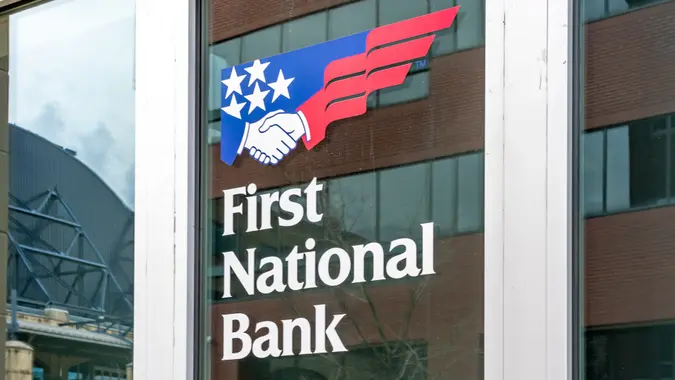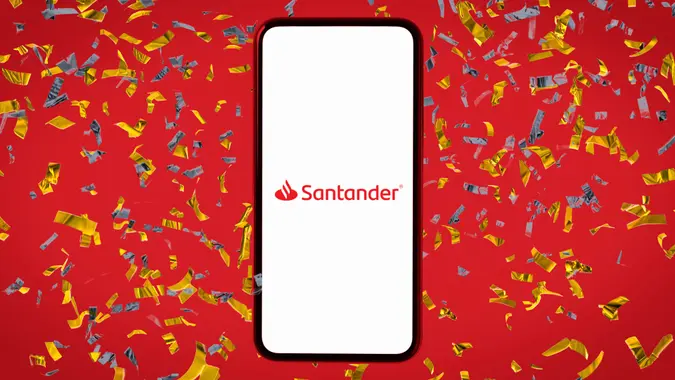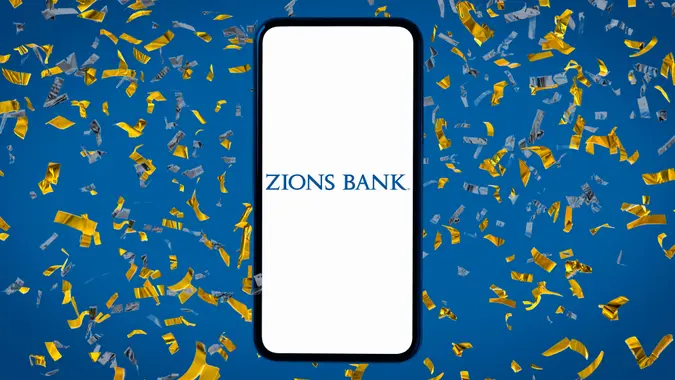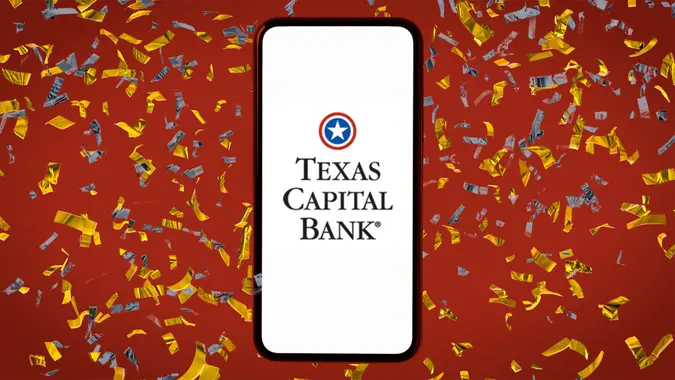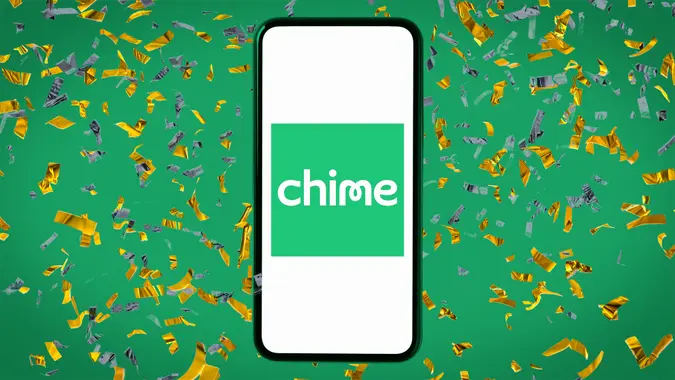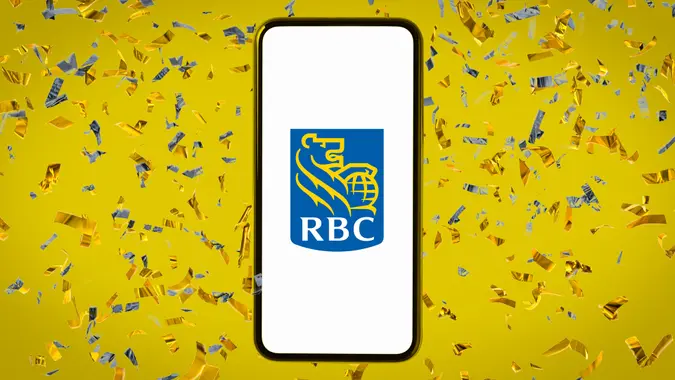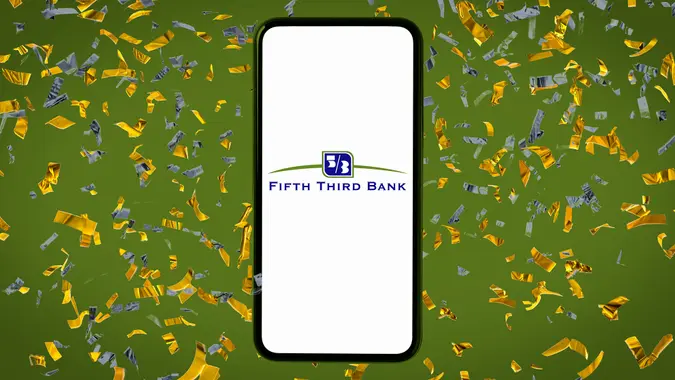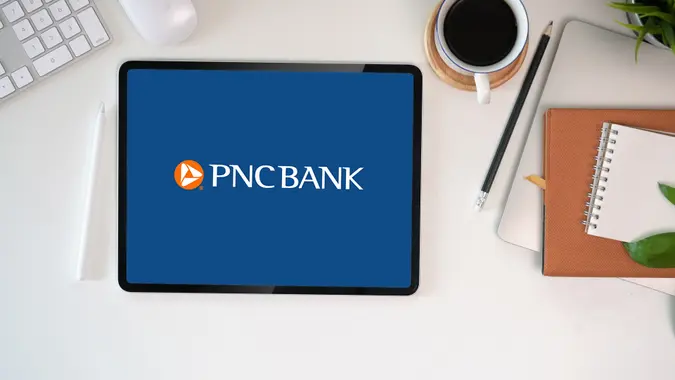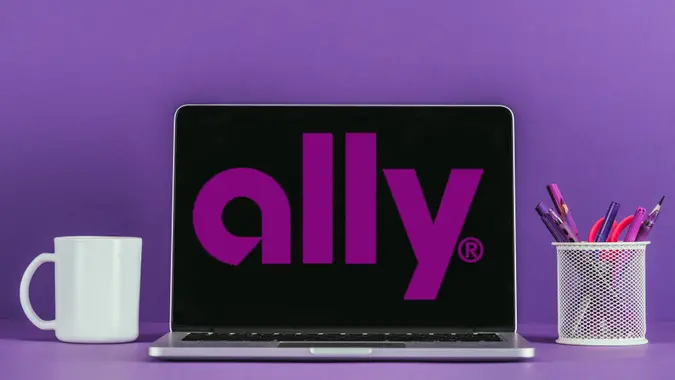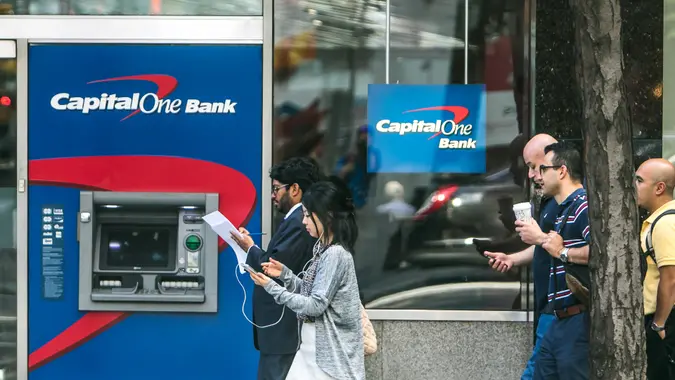Chase vs. Bank of America: Which Bank Is Better for You?

Commitment to Our Readers
GOBankingRates' editorial team is committed to bringing you unbiased reviews and information. We use data-driven methodologies to evaluate financial products and services - our reviews and ratings are not influenced by advertisers. You can read more about our editorial guidelines and our products and services review methodology.

20 Years
Helping You Live Richer

Reviewed
by Experts

Trusted by
Millions of Readers
Chase and Bank of America represent two of the largest banking operations in the world. For those people who prefer the convenience of having plenty of locations and ATMs close by — even when they’re out of town — deciding between these two options can be tough.
You want a bank that’s best suited to your needs, but the differences between having an account with Chase vs. Bank of America aren’t always completely clear. To help you understand why one or the other might be right for you, here’s a closer look at what each bank has to offer.
Chase vs. Bank of America: Account Comparison
Of course, for many consumers, picking a bank is more about comparing the numbers than anything else. Here’s a closer look at the different options for accounts offered at each and how they compare.
| Account Type | Chase | Bank of America |
|---|---|---|
| Savings | – Chase Savings – Chase Premier Savings |
– Bank of America Advantage Savings ® |
| Checking | – Chase Total Checking – Chase Secure Banking – Chase Premier Plus Checking – Chase Sapphire Banking – Chase Private Client Checking |
– Bank of America Advantage SafeBalance Banking® – Bank of America Advantage Plus Banking® – Bank of America Advantage Relationship Banking® |
| CDs | – 17 term options between 1 month and 120 months | – Featured CDs range from 7-37 months – Fixed term CDs range from 28 days to 10 years |
| Loans | – Mortgages – Home equity lines of credit – Car loans |
– Home Loans – Auto Loans |
For savings and checking accounts for both Bank of America and Chase, there are several ways to waive the monthly maintenance fees associated with the accounts, most of which involve some combination of maintaining a large enough balance, making regular direct deposits or having other types of accounts with the same bank.
Chase vs. Bank of America: Checking Accounts
Both bank’s checking accounts come with monthly maintenance fees that can be waived”. Both offer overdraft protection without transfer fees. Only Bank of America offers interest, but you’ll have to maintain a pretty high account balance to earn it.
Chase
Chase offers five checking accounts: Chase Total Checking, Chase Secure Banking, Chase Premier Plus Checking, Chase Sapphire Banking and Chase Private Client Checking
- $4.95, $12, $5 — waived under certain conditions
- No minimum deposit to open
- Chase Total Checking offers Chase Overdraft Assist, which waves fees if you’re less than $50 overdrawn*
- No fees on money orders or cashier’s checks
- Zelle partnership
- Pay bills with no fees using Chase Online Bill Pay
Bank of America
Bank of America offers three checking accounts: Advantage SafeBalance Banking®, Advantage Plus Banking® and Advantage Relationship Banking®
- $4.95, $12 or $25 monthly maintenance fee — waived under certain conditions
- $25 to open Advantage SafeBalance®, $100 to open Advantage Plus or Relationship
- Relationship account pays interest
- Paper checks available for Plus and Relationship accounts
- Balance Connect overdraft protection covers overdrafts with no transfer fees
- Can link with Zelle
Chase vs. Bank of America: Savings Accounts
Chase has no minimum opening deposits, while Bank of America has a $100 minimum deposit. Although Bank of America has a higher interest rate, you’ll have to qualify for the Platinum Honors Tier to get it. That requires you to maintain an account balance of at least $100,000 for three months. All of the interest rates offered by these accounts fall under the national average of 0.41.
Chase
Chase has the Chase Savings and Chase Premier Savings account.
- –
- No minimum opening deposits
- $5-$25 monthly service fee – waived under certain conditions
- Autosave feature
- Online, mobile banking available
Bank of America: Advantage Savings
Bank of America’s Advantage Savings account rewards higher balances with higher rates.
- – or higher with the relationship accounts
- $100 minimum opening deposit
- $8 monthly maintenance fee — waived under certain conditions
- Automatic savings options available
- No overdraft fees
- Online, mobile banking available
Chase vs. Bank of America: CDs
Both banks offers a larger variety of CD terms with a $1,000 minimum
Chase
Chase offers CDs with relationship and non-relationship rates.
- Minimum deposits: $1,000
- Terms: 1 to 120 months
- Automatic renewals
Bank of America
Bank of America offers standard and feature CDs.
- Minimum deposit: $1,000
- Terms: 28 days to 37 months
- Automatic renewals
Chase vs. Bank of America: Rate Comparison
Neither Bank of America nor Chase offers especially competitive rates on savings accounts, but it’s still important to compare your options to see what to expect. Here are the available annual percentage yields, or APYs.
| Chase | Bank of America | |
|---|---|---|
| Savings Account Rates | – APY -Chase Premier Relationship Savings: APY |
– APY -Preferred Rewards clients can earn higher rates – APY for Gold Tier – APY for Platinum Tier – APY for Platinum Honors, Diamond and Diamond Honors tiers |
| Checking Account Rates | – APY for Premier Plus and Sapphire Checking accounts | – APY under $50,000 and APY for $50,000 or more, only available for the Advantage Relationship Banking account |
| CD Rates | – APY standard rate – APY relationship rate with balance below $10,000 – APY relationship rate with balance $10,000 or higher |
– APY for Fixed Term CDs – APY for Featured CD products — $10,000 minimum to open -Auto-renews to fixed Term CD account with the same term at maturity |
Chase vs. Bank of America: Fee Comparison
| Fee Type | Bank of America | Chase |
|---|---|---|
| Monthly Maintenance | $4.95 – $25 | $4.95, $5, $6, $12, $25, $35 |
| Overdraft/Nonsufficient Funds | $35 | $34 per item, up to 3 per business day* |
| ATM | Non-Bank of America domestic: $2.50 | -Non-Chase domestic: $2.50 for some accounts -Non-Chase international: $5 for some accounts |
| Replacement Debit Card | $5 per card | $0 fee for standard shipping; $5 for rush requests for some accounts |
| Cashier’s Check | $15 | $8 each for some accounts |
The monthly maintenance fee for checking and savings accounts is most notable for both Bank of America and Chase. However, in each case except Secure Checking, you can get those fees waived by meeting certain standards, so be sure to carefully consider these for each option before committing. Depending on how you handle your finances, you might satisfy the criteria just by conducting your everyday banking. Be aware that there are several conditions to meet, each of which is different for every account.
As for the dreaded overdraft fees, Chase charges a $34 insufficient funds fee per item with a maximum of three per day for a total charge of $102. However, these are only charged in those instances when Chase covers your purchase based on your account’s history — a decision over which it has total discretion. If your charge is declined, you aren’t charged the fee. Accounts that include Overdraft Assist have no overdraft fees for overdrafts of $50 or less or if the item is $5 or less*.
Bank of America, meanwhile, offers an overdraft protection service that will automatically transfer the necessary funds to cover a purchase from another account should you be short. However, this isn’t available for every account, and in some cases, each transfer incurs a $12 fee. Otherwise, overdrafts incur a $10 fee for each item over $1. For transactions that aren’t completed due to insufficient funds, there is no fee.
Which Is Right for You: Bank of America or Chase Bank?
Chase and Bank of America, Member FIDC, are quite similar in most respects, including their five-star ratings from Bauer Financial, putting them in the Superior category and earning Bauer’s recommendation. Most customers are unlikely to be more satisfied with one over the other.
But if you’re trying to decide which bank to go with, you might be well-served by selecting the one with the most convenient locations to your home and/or work — chances are, that’s Chase because it has more branches. However, Chase has higher overdraft fees, which could get expensive for customers who don’t have a linked savings account.
FAQ
Here are the answers to some of the most frequently asked questions about Chase vs. Bank of America.- What are the main differences between Chase and Bank of America?
- The banks have a lot of similarities. Both banks offer the convenience of online and in-person banking and lots of accounts to choose from. One of the main differences is the type of overdraft protection each bank offers.
- Which bank has better interest rates for savings accounts?
- Although Bank of America has higher interest rates on their savings account, it is still very low and you must maintain a high account balance to get it.
- Which bank has the lowest fees?
- The bank's fees are pretty similar.
Daria Uhlig contributed to the reporting for this article.
Rates are subject to change; unless otherwise noted, rates are updated periodically. All other information on accounts is accurate as of March 6, 2025
$12 or $0 with one of the following, each monthly statement period:
Electronic deposits made into this account totaling $500 or more, such as payments from payroll providers or government benefit providers, by using (i) the ACH network, (ii) the Real Time Payment or FedNowSM network, (iii) third party services that facilitate payments to your debit card using the Visa® or Mastercard® network,
OR a balance at the beginning of each day of $1,500 or more in this account,
OR an average beginning day balance of $5,000 or more in any combination of this account and linked qualifying Chase checking, savings, and other balances.
*With Chase Overdraft AssistSM, Chase won’t charge an insufficient funds fee if you’re overdrawn by $50 or less at the end of the business day, or if you’re overdrawn by more than $50 and you bring your account balance to overdrawn by $50 or less at the end of the next business day (you have until 11 p.m. ET, or 8 p.m. PT, to make a deposit or transfer). Chase Overdraft Assist does not require enrollment and comes with eligible Chase checking accounts.
Editorial Note: This content is not provided by any entity covered in this article. Any opinions, analyses, reviews, ratings or recommendations expressed in this article are those of the author alone and have not been reviewed, approved or otherwise endorsed by any entity named in this article.
Editorial Note: This content is not provided by Chase. Any opinions, analyses, reviews, ratings or recommendations expressed in this article are those of the author alone and have not been reviewed, approved or otherwise endorsed by Chase.
 Written by
Written by  Edited by
Edited by 



